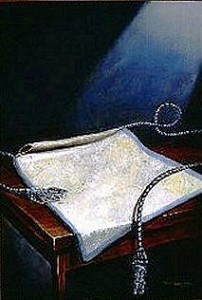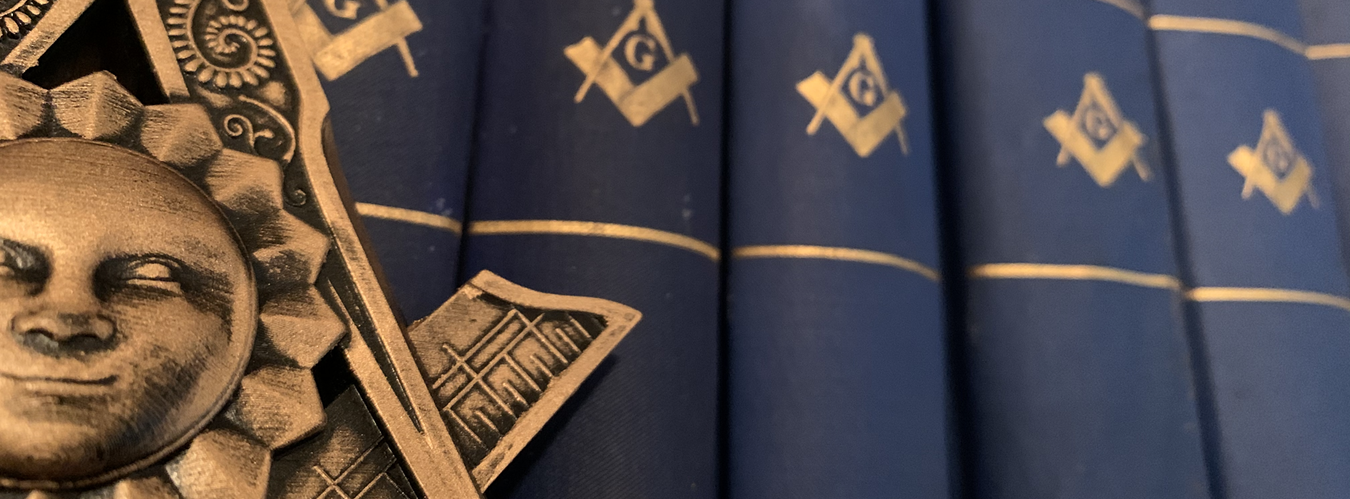Freemasonry is a system of morality, veiled in allegory,
and illustrated by symbols.
This definition of the Ancient Craft means much more to the well-informed Freemason than to the initiate, to whom it can convey but little. Naturally he wants to know “Why Freemasonry? Why is it veiled? Why illustrated with symbols?”
A Degree of Masonry is not an isolated experience, but an ever-enduring privilege.
1° Entered Apprentice
 The first section of this degree teaches the candidate, by Symbols, many important lessons, and among other things, that Masonry is a moral institution, founded upon the morality as taught in the Bible, and that he has to take the Holy Bible as the rule and guide to his faith and practice; it being the great light in Masonry and the source whence we, as Masons, derive all our ethics.
The first section of this degree teaches the candidate, by Symbols, many important lessons, and among other things, that Masonry is a moral institution, founded upon the morality as taught in the Bible, and that he has to take the Holy Bible as the rule and guide to his faith and practice; it being the great light in Masonry and the source whence we, as Masons, derive all our ethics.
The lessons as taught in this section not only serve as marks of distinction, but communicate useful and interesting knowledge, when they are thoroughly examined and understood.
This degree begins a man’s journey into freemasonry and represents youth. He is a Mason only to the point that he is called “brother” and has certain rights; he is not yet a Mason in the legal Masonic sense. The Entered Apprentice is a Mason only in the sense that he is a rough ashlar in process of being made into a perfect ashlar.
2° Fellowcraft
 Masonry, like all other sciences, is progressive, and can only be acquired by degrees, and at intervals. When an Entered Apprentice has served the proper time, and learned properly the Ritual of the first degree, he then proceeds to the Fellow-Craft Degree. The new Entered Apprentice must first however, be examined in an Entered Apprentice Lodge as to his proficiency in that degree.
Masonry, like all other sciences, is progressive, and can only be acquired by degrees, and at intervals. When an Entered Apprentice has served the proper time, and learned properly the Ritual of the first degree, he then proceeds to the Fellow-Craft Degree. The new Entered Apprentice must first however, be examined in an Entered Apprentice Lodge as to his proficiency in that degree.
The Fellowcraft Degree symbolizes man in adulthood and represents work. This degree is divided into two sections, the first of which is entirely ceremonial, and the Lecture pertaining to the same is a restatement of the ceremonies.
The second section of the degree represents an adulthood of continued schooling; of renewed research; of further instruction. The Terrestrial and Celestial Worlds, the Orders of Architecture, the Human Senses and the Liberal Arts and Sciences are here introduced and explained. The Fellowcraft Degree is a call to learning, an urge to study, a glorification of education.
3° Master Mason
 This degree represents man in old age and relates to wisdom. Freemasonry, as before stated, is progressive, and knowledge of its philosophy and teachings can only be acquired by time, patience, perseverance and close application.
This degree represents man in old age and relates to wisdom. Freemasonry, as before stated, is progressive, and knowledge of its philosophy and teachings can only be acquired by time, patience, perseverance and close application.
In the Entered Apprentice Degree, we are taught the duties we owe to God, our neighbor and ourselves.
In the Fellowcraft Degree, we are more comprehensively instated into the mysteries of moral science and learn to trace the goodness and majesty of the Creator, by minutely analyzing His works.
But the Master Mason Degree cements the whole, and is calculated to bind men together by mystic ties of fellowship, as in a bond of fraternal affection and brotherly love.
In this degree the Ancient Landmarks of the Order are preserved, and it is from them the rulers of the Craft are selected. It is in a Master’s Lodge that all business of a legislative character and day-to-day business of the lodge is transacted and all voting of new members takes place.
The candidate, after being examined in a Fellow-Craft Lodge, as to his proficiency, is prepared for his introduction into the first section of the Master’s Degree.
The degree delves into the deepest recesses of a man’s nature. While it leads the initiate into the Sanctum Sanctorum of the Temple, it probes the Holy of Holies of his heart.
This Degree is divided into multiple sections. The first section is ceremonial and closes with an explanation of the working tools of a Master Mason. The second section, like the first, is altogether ceremonial, and recites a legend of the utmost importance to the Order. In this section the Sublime Degree departs from the familiar. Instead of being concerned with moral principles and exhortations, as is the first degree, or with architecture and learning, as is the second, it answers the cry of Job, “If a man die, shall he live again?” Much depends upon the impression made upon every candidate at the time he receives this degree. In its symbolical explanation, it affirms our faith in the resurrection of the body and the immortality of the soul, and places integrity and firmness upon a lofty pedestal in strong contrast with those passions which debase and ruin those who indulge in them.
As a whole the degree is symbolical of that old age by the wisdom of which “we may enjoy the happy reflections consequent on a well-spent life, and die in the hope of a glorious immortality.”
